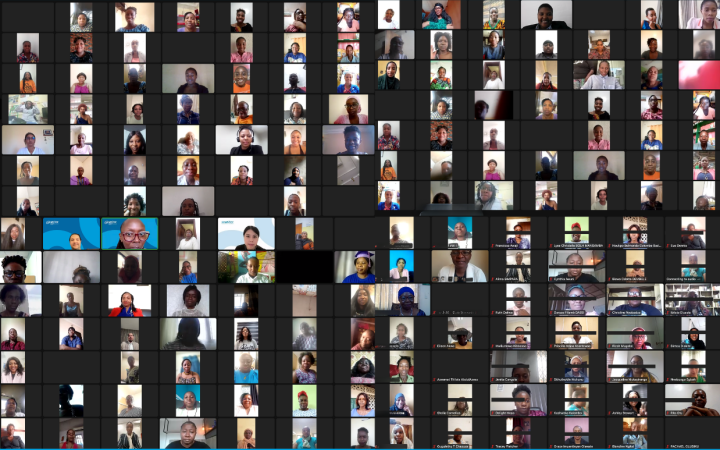A joint statement by the Australian Conservation Foundation, Birdlife Australia, Humane Society International, the Wilderness Society and WWF.
National conservation organisations have come together to support a nationally coordinated wildlife and ecosystem recovery effort in the midst of the unprecedented bushfires devastating Australia.
These fires will have profound implications for conservation in Australia, and the response will need to be herculean.
National conservation organisations have outlined an immediate response plan to help address the devastating impacts these bushfires are having on wildlife and heritage. Organisations are encouraging the federal government to drive coordination and collaboration across sectors and ensure scientific experts, communities, Indigenous land managers and NGO’s can get into fire affected regions and implement urgent recovery work, while supporting wildlife rescue efforts.
This is a national ecological crisis, with devastating and unprecedented fires driven by climate change occurring across much of Australia.
Our organisations harbour serious concerns for a range of flora and fauna that have been catastrophically impacted by these fires, including koala populations across the south-east, the Kangaroo Island dunnart, glossy black cockatoo, long-footed potoroo, western ground parrot, blue mountains water skink, regent honeyeater, eastern bristlebird, southern corroboree frog and the brush-tailed rock wallaby.
We are concerned these species are only the tip of the iceberg and note that conservative scientific estimates are that more than a billion animals have been wiped out through the fires so far.
Huge proportions of globally significant areas like the Gondwana Rainforest and Blue Mountains World Heritage Areas along with the Australian Alps and Western Australia’s Stirling Ranges have suffered catastrophic burns.
A full assessment of ecological impacts across the fire zone must be undertaken and our organisations are committed to supporting this work and the subsequent recovery efforts.
A coordinated federal and state response to this ecological disaster is needed, which will be most efficiently led by the Australian Government. There is a significant role the Australian Government can play in mobilising experts and resources to respond to this crisis. The resources will need to match the scale of the catastrophe and be sustained for the long-term recovery.
The devastating impacts on wildlife also underscore the need for more effective longer-term protections of critical habitat under national law and ensuring the full implementation of wildlife recovery plans and threat abatement plans for all threatened species with significantly increased funding.
Crises of this scale are likely to occur again and threaten ecosystem collapse unless government tackles the main driver of catastrophic fire seasons and other extreme weather events: dangerous climate change.
Australia is not doing enough to reduce climate pollution and, as was emphasised as recently as the United Nations climate conference in Madrid, government must lift its ambition if Australia is to do its fair share to limit climate damage.
Our checklist for Government:
Get experts on-ground as soon as possible
- Ask the Department of the Environment and Energy and National Bushfire Recovery Agency to urgently mobilise the scientific and conservation community to identify and safely access at-risk populations of species in all bushfire affected areas. The Threatened Species Recovery Hub of the National Environmental Science Program is well positioned to contribute to this task, along with other species conservation experts, many of whom are already in the field responding to the crisis. This would establish a priority list of highly vulnerable and impacted species of plants, animals and ecological communities that require urgent intervention.
- Work with the states and territories to establish cross-agency conservation teams to access high-priority species locations as soon as possible and develop key recovery actions to ensure that at-risk populations have the best chance of intervention and recovery.
- Where possible investigate pre-emptive relocations and ex-situ conservation measures for highly vulnerable species until the fire threat abates. Such measures would need to be only employed with sufficient safeguards and where there is little other alternative.
Support emergency species recovery interventions
- Provide resources from the national bushfire recovery fund and the National Heritage Trust Special Account to support emergency recovery interventions for nationally threatened species impacted by the fires. Recovery interventions should be tailored to meet specific species needs and may include supplementary feeding and watering, humanely controlling invasive predators in post-fire landscapes, establishing new habitat structures and establishing and/or supporting captive breeding populations.
Provide urgent financial support to wildlife rescue and recovery
- Provide financial support to voluntary wildlife carers, organisations and veterinary services that are looking after injured wildlife as a result of the fires.
Resource TSSC to enable urgent assessment of bushfire impacted species and communities
- Resource the Threatened Species Scientific Committee (TSSC) so it can fully evaluate the impact of the fires on threatened species and ecological communities and their status. The TSSC should be provided with additional resources to enable the urgent assessment of these species or ecological communities. An expert taskforce could be appointed to provide the TSSC with recommendations for those species or ecological communities that require emergency protection or additional protection, to feed into the 2020 assessment process with expedited timeframes for assessment.
Rapidly evaluate and address impacts on heritage values and Ramsar wetlands
- Prepare a rapid evaluation of the impacts on World Heritage Properties, National Heritage Places and Ramsar listed wetlands and key actions, funding and responsible parties required to protect and recover those values.








